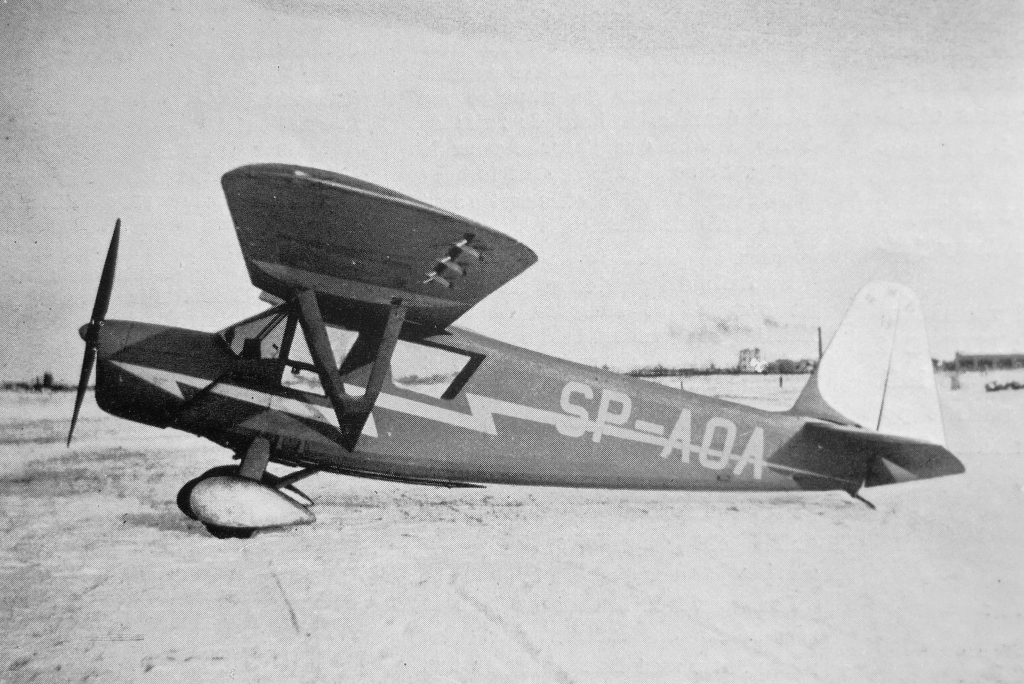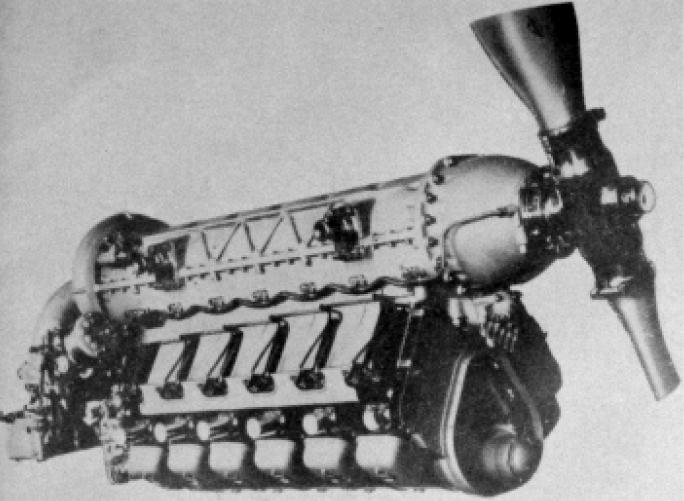|
Rogožarski SI-Gyp
Rogožarski () was a Yugoslav aircraft manufacturer based in Belgrade. History Officially established on 22 April 1924 under the name First Serbian Aircraft Factory of Živojin Rogožarski (), the company was responsible for most of Yugoslavia's air industry in the interwar period, along with Ikarus. Initially, it repaired aircraft which had been confiscated during World War I, but soon started manufacturing its own models, as well as license producing aircraft from abroad. After the company was nationalised by the Yugoslav government in 1946, the factory was merged together with Zmaj into Ikarus, which continued in the aeronautical industry until 1962. During its existence, Rogožarski produced a total of 286 aircraft. Aircraft See also * Aircraft industry of Serbia Kingdom of Serbia became part of the new state, Kingdom of the Serbs, Croats and Slovenes. which was formed on 1 December 1918. Even though the industry was on a very low level of development, the state ... [...More Info...] [...Related Items...] OR: [Wikipedia] [Google] [Baidu] |
Aerospace
Aerospace is a term used to collectively refer to the atmosphere and outer space. Aerospace activity is very diverse, with a multitude of commercial, industrial, and military applications. Aerospace engineering consists of aeronautics and astronautics. Aerospace organizations research, design, manufacture, operate, maintain, and repair both aircraft and spacecraft. The border between space and the atmosphere has been proposed as above the ground according to the physical explanation that the air density is too low for a lifting body to generate meaningful lift force without exceeding orbital velocity. This border has been called the Kármán line. Overview In most industrial countries, the aerospace industry is a co-operation of the public and private sectors. For example, several states have a civilian space program funded by the government, such as NASA, National Aeronautics and Space Administration in the United States, European Space Agency in Europe, the Canadian Space A ... [...More Info...] [...Related Items...] OR: [Wikipedia] [Google] [Baidu] |
Rogožarski IK-3
The Rogožarski IK-3 was a 1930s Kingdom of Yugoslavia, Yugoslav monoplane single-seat Fighter aircraft, fighter, designed by Ljubomir Ilić, Kosta Sivčev and Slobodan Zrnić as a successor to the Ikarus IK-2 fighter. Its armament consisted of a propeller hub, hub-firing autocannon and two fuselage-mounted Synchronization gear, synchronised machine guns. It was considered comparable to foreign aircraft such as the Messerschmitt Bf 109E and came into service in 1940. The prototype crashed during testing; twelve production aircraft had been delivered by July 1940. Six IK-3s were serviceable when the Axis powers, Axis invasion of Yugoslavia began on 6 April 1941. All six were in service with the 51st Independent Fighter Group at Zemun near Belgrade. Pilots flying the IK-3 claimed 11 Axis aircraft had been shot down during the 11-day war. According to one account, to prevent them from falling into German hands, the surviving aircraft and incomplete airframes were destroyed by their ... [...More Info...] [...Related Items...] OR: [Wikipedia] [Google] [Baidu] |
Hawker Hurricane
The Hawker Hurricane is a British single-seat fighter aircraft of the 1930s–40s which was designed and predominantly built by Hawker Aircraft Ltd. for service with the Royal Air Force (RAF). It was overshadowed in the public consciousness by the Supermarine Spitfire during the Battle of Britain in 1940, but the Hurricane inflicted 60% of the losses sustained by the ''Luftwaffe'' in the campaign, and fought in all the major theatres of the Second World War. The Hurricane originated from discussions between RAF officials and aircraft designer Sir Sydney Camm about a proposed monoplane derivative of the Hawker Fury biplane in the early 1930s. Despite an institutional preference for biplanes and lack of interest by the Air Ministry, Hawker refined its monoplane proposal, incorporating several innovations which became critical to wartime fighter aircraft, including retractable landing gear and the more powerful Rolls-Royce Merlin engine. The Air Ministry ordered Hawker's ''Interce ... [...More Info...] [...Related Items...] OR: [Wikipedia] [Google] [Baidu] |
RWD 13
The RWD 13 was a Polish touring plane of 1935, three-seater high-wing monoplane, designed by the RWD team. It was the biggest commercial success of the RWD. Development The RWD 13 was a touring plane, developed from a line of sports planes RWD 6 (a winner of Challenge 1932 international touring aircraft contest) and RWD 9 (a winner of Challenge 1934). It was designed by Stanisław Rogalski and Jerzy Drzewiecki of the RWD team, in the DWL workshops ('' Doświadczalne Warsztaty Lotnicze'') in Warsaw, for and order of the LOPP paramilitary organization. The prototype was constructed using parts of a broken up RWD 6 (initially it was even supposed to be designated RWD 6bis), but its construction was more similar to newer RWD 9. It first flew on 15 January 1935 (registration SP-AOA). Since the RWD 13 was not supposed to be a competition aircraft, the main differences from the RWD 9 were: an inline engine with lower power output, instead of a radial engine, and simpler wing me ... [...More Info...] [...Related Items...] OR: [Wikipedia] [Google] [Baidu] |
RWD 8
The RWD 8 was a Polish parasol wing monoplane trainer aircraft produced by RWD. It was used from 1934 to 1939 by the Polish Air Force and civilian aviation. Development The RWD 8 was designed in response to a Polish Air Force requirement in 1931 for a basic trainer aircraft. It was designed by the RWD team of Stanisław Rogalski, Stanisław Wigura and Jerzy Drzewiecki. The first prototype (registration SP-AKL), was flown in early 1933. It won the contest for the new Polish military trainer, against the PZL-5bis and Bartel BM-4h biplanes. It was considered a very stable and well-handling aircraft. Since the DWL ('' Doświadczalne Warsztaty Lotnicze'') workshops – a manufacturer of RWD designs – had limited production capability, the Polish military decided to produce the aircraft in a nationalized factory PWS (''Podlaska Wytwórnia Samolotów''). DWL gave away the licence free of charge, only for covering design costs. PWS produced aircraft for both military and civil ... [...More Info...] [...Related Items...] OR: [Wikipedia] [Google] [Baidu] |
Hansa-Brandenburg C
Hansa und Brandenburgische Flugzeugwerke (more usually just Hansa-Brandenburg) was a German aircraft manufacturing company that operated during World War I. It was created in May 1914 by the purchase of ''Brandenburgische Flugzeugwerke'' by Camillo Castiglioni, who relocated the factory from Liebau to Brandenburg an der Havel. Brandenburg's chief designer, Ernst Heinkel was retained by the new enterprise. By Autumn 1915, it had become the largest aircraft manufacturer in Germany, with a capital of 1,500,000 Marks, 1,000 employees, and two more factories - one in Rummelsburg, Berlin, and one in Wandsbek, Hamburg. Although manufacturing was carried out in Germany, Castiglioni was an Austrian, and many of the firm's military aircraft were produced for the Austro-Hungarian aviation corps. The firm became especially known for a highly successful series of floatplane fighters and reconnaissance aircraft that were used by the Imperial German Navy during the war. Hansa-Brandenburg did ... [...More Info...] [...Related Items...] OR: [Wikipedia] [Google] [Baidu] |
Rogožarski R-313
The Rogozarski R-313 (Рогожарски Р-313 in Serbian) was a two-seat twin-engined monoplane designed as a fighter/light bomber/reconnaissance aircraft in Yugoslavia before World War II. It was designed and built at the Rogozarski factory in Belgrade. Design, construction and development The Rogozarski R-313 was a two-seater twin-engined fighter/light bomber/reconnaissance aircraft. It was powered by two in-line Walter Sagitta IIR engines, both fitted with a compressor; each was capable of 493 hp. The elliptical, wooden fuselage was covered in plywood which was also used to 'skin' the round-tipped, trapezoidal wings. The engine nacelles also housed the landing gear. The tail-wheel was, like the main landing gear, retractable. The fuel tank was located in the centre section between the wings. The reconnaissance variant of this aircraft was due to be equipped with a camera, a radio, a fixed 20mm cannon and a single FN 7.9mm machine gun, flexibly mounted. As a light bomb ... [...More Info...] [...Related Items...] OR: [Wikipedia] [Google] [Baidu] |
Rogožarski Brucoš
Rogožarski Brucoš (Serbian Cyrillic:Рогожарски Бруцош) was a single-engine, two-seat, low wing monoplane aircraft designed as a trainer in Yugoslavia before World War II. It was designed and built in the Rogožarski aircraft factory in Belgrade. Design and development In order to replace its obsolete pilot training aircraft, the Zmaj Fizir FN biplane, the Yugoslav Royal Air Force (YRAF) Command held a competition in mid-1936 to develop a new aircraft for training pilots. The new aircraft was to be a low wing aircraft so that Yugoslavian pilots could get accustomed to piloting the fighters that the Yugoslav Royal Air Force was using, the Hawker Hurricane, Messerschmitt Bf 109 and the Rogožarski IK-3. The Rogožarski Factory decided to participate in the competition and engaged two well-known aerospace engineers, Miroslav Nenadović and Mitrović Milenko-Spirta, who began working on the design. Building of the prototype started the same year, and it flew for t ... [...More Info...] [...Related Items...] OR: [Wikipedia] [Google] [Baidu] |
Rogožarski SIM-XIV-H
The Rogožarski SIM-XIV-H () was a 1930s Yugoslav coastal reconnaissance floatplane and light bomber, twin-engine, with three crew members. It was designed and built at the Rogožarski factory in Belgrade. Design and development In January 1937, the Yugoslav Navy Air Service issued a specification for a twin-engine coastal reconnaissance aircraft,Green 1962, p. 201. to replace the Ikarus IO flying boat. To meet this requirement, Rogozarski proposed the SIM-XIV-H, a twin-engine floatplane designed by Sima Milutinović, and this type was selected by the Yugoslav navy, with the first prototype making its maiden flight on 8 February 1938. The SIM-XIV-H was a low winged monoplane of mixed wood and metal construction, with an oval section monocoque fuselage. The wing was braced to the fuselage by steel-tube struts, with the tail also braced. It had a glazed nose, with a gun turret armed with a single machine gun mounted above the nose. The pilot and radio operator/gunner sat in tan ... [...More Info...] [...Related Items...] OR: [Wikipedia] [Google] [Baidu] |
Rogožarski SIM-VIII
The SIM-VIII (Serbian Cyrillic:СИМ-VIII) was a 1931 Yugoslavia, Yugoslav, single-engined, 2-seat, sport, tourist and training aircraft, designed by Sima Milutinović and built at the Rogožarski factory in Belgrade from 1931 and by Ikarbus, Ikarus at Zemun from 1933. Design and development The SIM-VIII was designed by Sima Milutinović at the end of 1930, with a desire to contribute to the development of aviation in Yugoslavia. The prototype was built at the expense of the constructor and the first test flight was conducted at Zemun in the autumn of 1931. After certification the aircraft was purchased by the Yugoslav Royal Air Force and the Yugoslav Aeroclub at Belgrade. The SIM-VIII was a parasol winged monoplane powered by an Siemens-Halske Sh 14 engine driving a wooden 2-bladed Propeller (aircraft), propeller, seating two crew members in tandem open cockpits. Construction of the SIM-VIII employs several new construction solutions designed to reduce cost and streamline pr ... [...More Info...] [...Related Items...] OR: [Wikipedia] [Google] [Baidu] |
Rogožarski SIM-XII-H
The Rogožarski SIM-XII-H () was a Yugoslav trainer single-engine floatplane, with two floats designed in 1938. It was designed and built at the Rogožarski factory in Belgrade. Design and development The Yugoslav Royal Air Force, YRAF was unsuccessfully trying to choose the most appropriate seaplane for pilot training so they turned to the Rogožarski factory for help in 1937 and ordered the seaplane school project to be made that would fit in its characteristics to the school plane Rogožarski SIM-X, SIM-X. Since it was not possible to make a simple modification (adaptation of existing aircraft SIM-X) for installation of Edo Aircraft Corporation, EDO floats, chief designed Sima Milutinović fitted the plane with a more powerful engine Walter Major, Walter Major 6 190 hp, leading to an increase in aircraft size. Thus, this new high-flying school plane with two floats represented an entirely new plane, designated SIM-XII-H. During 1937, the project went into realization stag ... [...More Info...] [...Related Items...] OR: [Wikipedia] [Google] [Baidu] |




